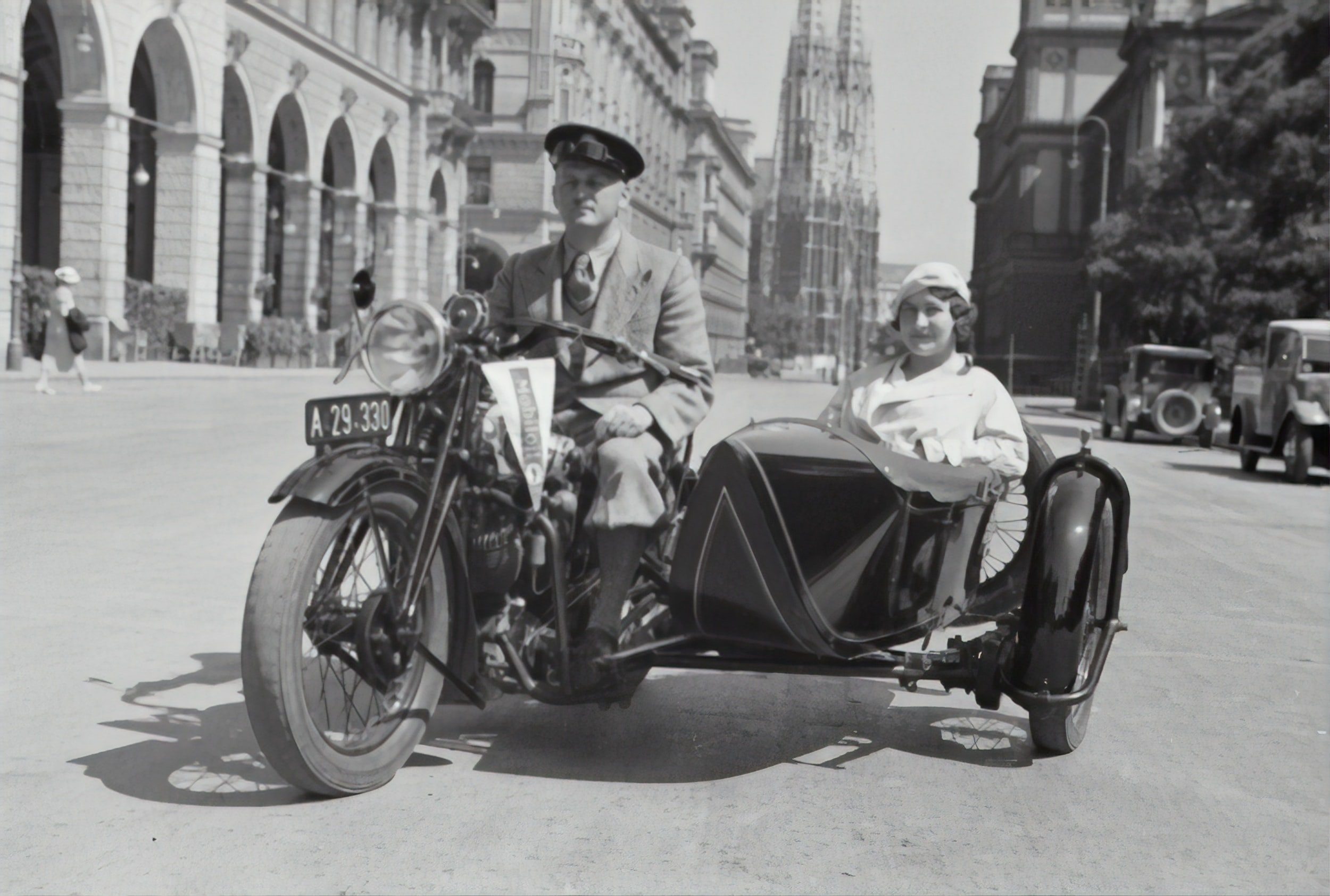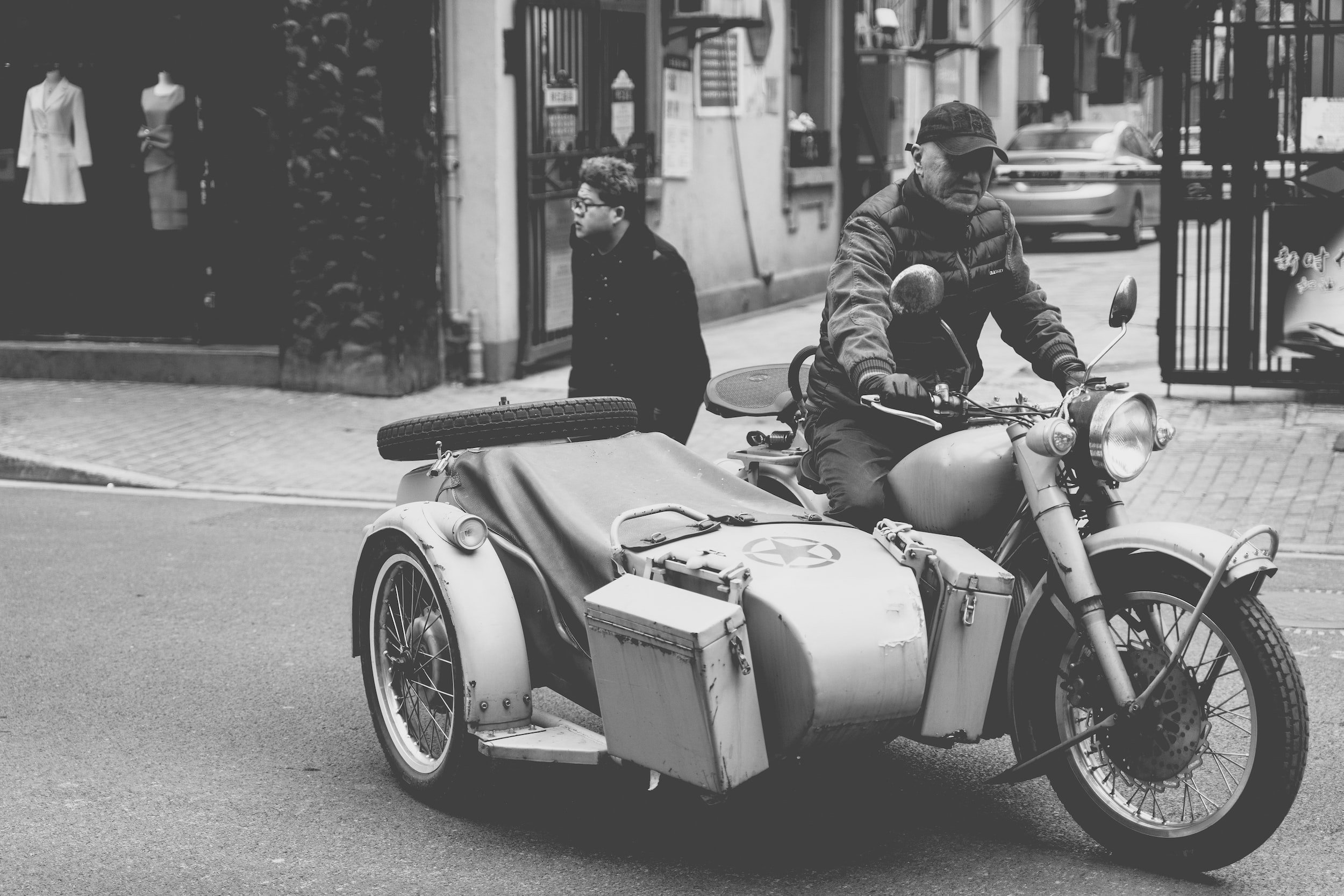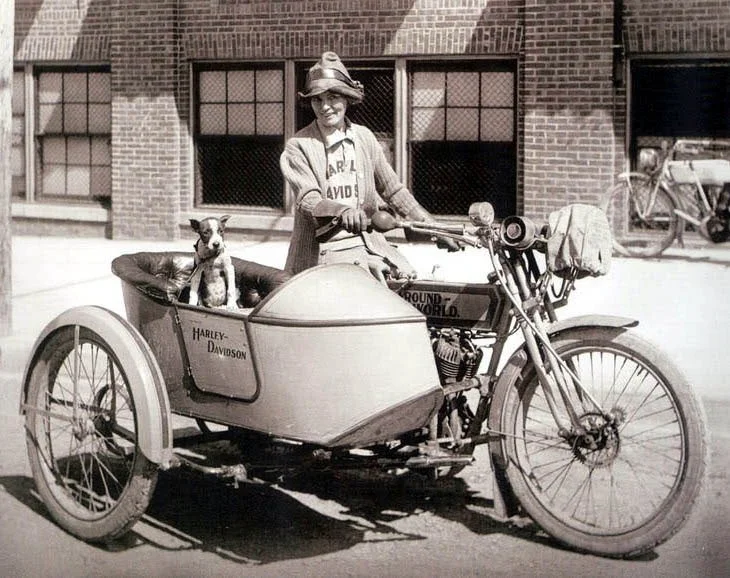
A little History of the Sidecar
Mr M Bertoux, a French army officer, secured a prize offered by a French newspaper in 1893 for the best method of carrying a passenger on a bicycle. The sidecar wheel was mounted on the same lateral plane as the bicycle's rear and was supported by a triangulation of tubes from the bicycle. A sprung seat with back rest was mounted above the cross-member and a footboard hung below.[2] A sidecar appeared in a cartoon by George Moore in the January 7, 1903, issue of the British newspaper Motor Cycling. Three weeks later, a provisional patent was granted to Mr. W. J. Graham of Graham Brothers, Enfield, Middlesex. He partnered with Jonathan A. Kahn to begin production.[citation needed]
One of Britain's oldest sidecar manufacturers, Watsonian, was founded in 1912. It is still trading as Watsonian Squire. Automobile producer Jaguar Cars was founded in 1922 as a sidecar manufacturer, the Swallow Sidecar Company.
In 1913, American inventor Hugo Young, of Loudonville, Ohio, designed a new sidecar which was not rigidly fixed to the motorcycle. Instead, his invention employed a flexible connection, which allowed the sidecar to turn, raise, and lower without affecting the balance of the motorcycle. This was a great improvement over the original design, allowing for much safer and more comfortable experiences for both the passenger and driver. Young opened up the Flxible Sidecar Company (the first "e" was dropped to allow for trademarking the name) in Loudonville, Ohio and soon became the largest sidecar manufacturer in the world. When the motorcycle craze began to fade in the 1920s due to more affordable cars being marketed, as well as the banishment of sidecar racing in the United States, the Flxible Sidecar Company began producing transit buses, ambulances, and hearses.
A motorcycle with sidecar tool down a rainswept street in Old Havana, 1997.
Until the 1950s sidecars were quite popular, providing a cheap alternative to passenger cars; they have also been used by armed forces, police and the UK's AA and RAC motoring organisations.



